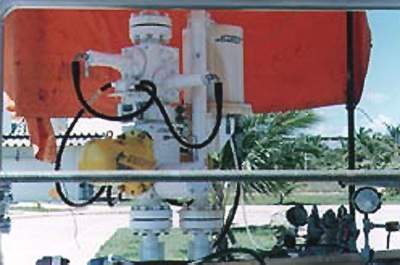Petrobras originally set up the PROCAP 2000 project in order to enable the company to produce oil and gas from offshore fields situated in ultra-deep waters (of 1,000m-3,000m), with the aim of incorporating the reserves located at these water depths.
This project targets the pilot trial of a subsea multiphase pumping system and a subsea multiphase metering system.
Deepwater subsea equipment
The main target is to promote the development of flexible pipes, accessories and installation procedures for water depths up to 3,000m, so as to evaluate and validate new flexible pipe design criteria and new material applicability.
The sub-projects include horizontal christmas trees for water 2,500m-deep, a drill pipe riser for ultra deepwater; alternatives for drilling risers, slender wells for ultra-deep water, the shared actuator manifold known as MacManifold, pig operation devices and integrated system subsea equipment for the RJS396 area.
Drilling and completion techniques
The two main topics were concerned with underbalanced drilling and high-pressure jet drilling.
Subsea separation systems
The objective was to decrease the well-head backpressure by separating the gas and the liquid phases at the seabed as near as possible to the production well.
This project is based on a vertical annular separation and pumping system (VASPS) subsea separation system.
Highly deviated wells in unconsolidated lithologies
The aim of the project was to develop studies and tools for a better understanding of well instability, thus minimising its effect by guaranteeing cuttings removal.
The problems relating to mechanical stability and cuttings removal are very well connected, as both are physically related.
Due to the collapse of the formation, the cuttings fall into the well in great volumes.
Stability in horizontal and deviated wells
The major concern has largely been restricted to poorly consolidated formations, perforated completions subjected to excessive drawdown and wellbores intersecting tectonically active zones.
Electrical submersible pumps
A technological cooperation agreement was signed in March 1994 between the companies capable of manufacturing or adapting all the necessary equipment, including the electrical motor and pump (REDA / LASALLE), subsea power cable (PIRELLI), wet-mateable connectors (TRONIC) and subsea trees (SADE-VIGESA / CAMERON).
Kick and blowout control in deepwater wells
The objectives are the development of theoretical and experimental studies for helping in the definition of adequate well-control procedures in order to minimise the possibility of blowouts.
Considering the risks associated with gas influx control, early kick detection is a key factor.
Variable frequency electrical energy transmission system
Electric induction motors are needed to drive the oil pumps and gas compressors. In most cases, the boosting systems will need a motor-pump assembly that can operate with motor speed variation.
The motor speed variation can be performed with a variable frequency converter (VFC).
Mooring system
The aim of this project is to develop technology to moor drilling, production and off-loading systems in water depths down to 3,000m.
Acquisition of geotechnical data
This will enable environmental knowledge in association with the geotechnical behaviour, active geological processes and a detailed morphology of the seafloor along the Brazilian Continental Slope in the Campos Basin, to be understood from the engineering standpoint.
Flow assurance in deepwater conditions
The Flow Assurance in Deep Water Conditions project has the following objectives:
- Provide adequate prediction tools
- Evaluate techniques to prevent or correct the associated problems, both in the lab and in the field
Stationary production units with dry completion
This will make available the Spar Buoy and TLP conceptual design for water depths from 1,000m-3,000m, as well as evaluating the possibility of the SPAR to accommodate oil storage, identifying possible limitations.
Flow assurance in deepwater
Flow assurance provides adequate prediction tools, evaluates techniques to prevent or correct the associated problems and generates essential information for feasibility studies of new areas.














